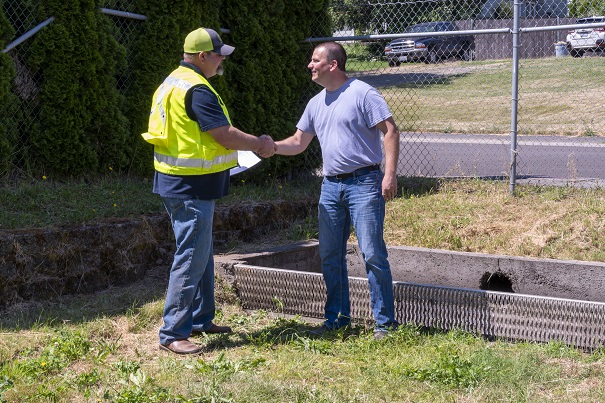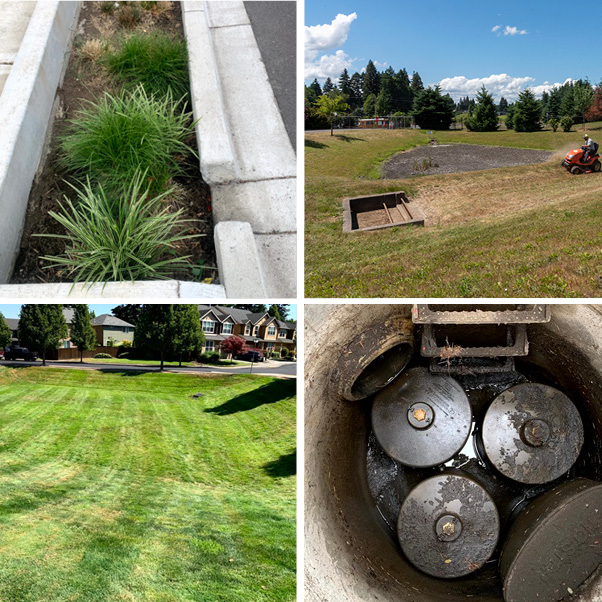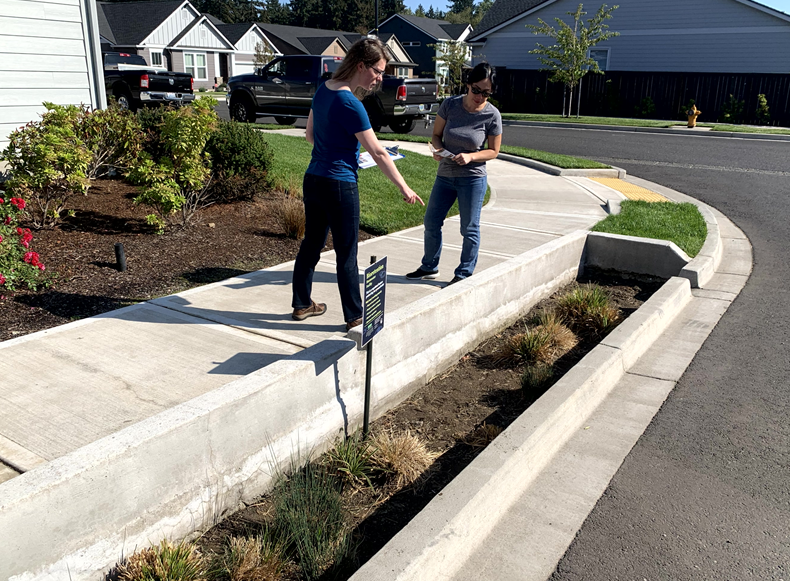Rain falling on streets, roofs and parking lots runs off and picks up contaminants, including dirt, oil, fertilizers, pesticides, pet waste, litter, chemicals and metals. In Clark County, this polluted stormwater runoff usually flows into storm drains or ditches that eventually to streams, lakes, rivers and wetlands. While stormwater does not get treated at wastewater treatment plants, it does receive some treatment in stormwater facilities - ponds, swales, rain gardens, filter cartridges and other stormwater features. Maintaining these stormwater features so they function as intended is important for protecting water quality and stream health.
| Pollution Control and Facilities |
|---|
| What is a stormwater facility |
| Facility maintenance standards |
| Facility annual inspections |
What is a stormwater facility?
Stormwater facilities capture stormwater runoff to allow water to soak into the ground on-site and to trap certain pollutants such as sediment and litter. These facilities help reduce flooding, slow down water runoff, reduce erosion and remove pollutants and consist of various components such as inlets, basins, ponds and piping. These features exist in developed areas that include residential neighborhoods, commercial areas and industrial sites. Many are privately-owned and the property owners are required to maintain them so they function as intended.
Maintenance standards
Stormwater facilities are designed with specific standards and must be maintained to specific standards. Storm drains, pipes, sediment traps and ditches must be periodically cleared so water can flow. Detention ponds, dry wells and bioswales also need to be inspected and maintained. Like houses or vehicles, regular and routine maintenance can prevent expensive repairs and retrofits.
Stormwater Facility Operations and Maintenance (Book 4) of Clark County's Stormwater Manual 2021 - Standards and practices for maintaining public and private stormwater facilities, including erosion control and vegetation management.
Stormwater Partners of SW Washington - Videos, checklists and guidelines for owners of private stormwater facilities such as businesses, property managers and homeowners associations (HOAs).
Who owns stormwater facilities?
Some stormwater facilities are owned by public agencies and some are owned by private organizations. They all must adhere to the same maintenance standards.
Maintenance of privately owned stormwater facilities is the responsibility of the facility owner. Owners can be HOAs, individual property owners, developers or commercial property owners.
Facility annual inspections
The county inspects privately-owned facilities annually. If the inspector finds maintenance defects, you will be notified. A stormwater facility inspector will provide information on how to bring your stormwater facility into compliance with maintenance standards. For more information, please contact cleanwater@clark.wa.gov. Please make the subject of your email "Stormwater facility inquiry".
Public stormwater facilities are also inspected annually. Each year, county crews maintain over 2000 stormwater facilities, 13,000 catch basins and 500 miles of storm pipe. Crews also sweep major roads and neighborhood streets to remove debris before it can wash into storm drains. Please call Clark County Public Works Road Operations Division at 564.397.2446 for questions about county-owned stormwater facilities.
Business technical assistance
Clark County provides support to property managers and local businesses to ensure their stormwater system is functioning properly. For more information, contact Bob Patterson at 564.397.4493.
Want to take your business to the next level of sustainable practices? Check out the Green Business program. Cut costs, earn recognition and conserve resources. Contact Sarah Keirns for more information at 564.397.7319.
- Spill prevention plan - inventory your business to reduce the risk of spills.
- Vehicle leak prevention - if you see dark spots on the pavement, your vehicles may be leaking. Fix it!


